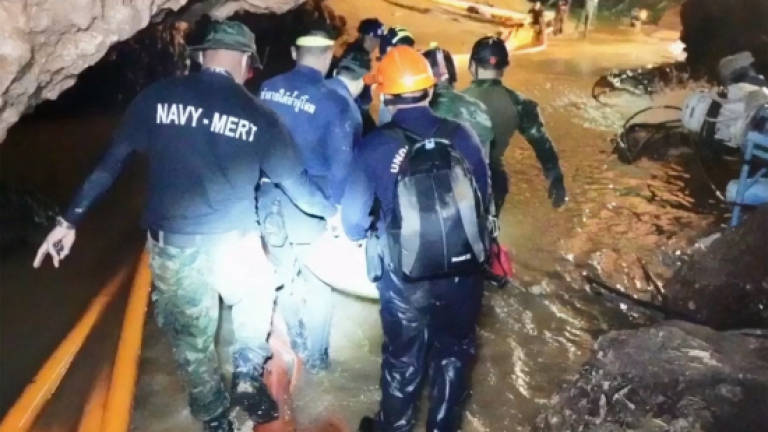Local cavers not paying enough attention to safety

KUALA LUMPUR: The recent Tham Luang cave episode in Thailand that riveted people around the world has triggered memories of an incident in Perlis in March 1999 where 44 university students and three guides were trapped in a cave near Gua Kelam, not far from the Malaysia-Thai border, for more than 24 hours.
The students, who were members of the International Islamic University Recreation Club, were stranded on the banks of a slippery subterranean pool about 350m from the cave entrance before they were rescued by Perlis Fire and Rescue Service Department personnel.
According to Malaysia Speleological Association president Zainul Fikri Mohd Idris, awareness of safe caving practices was generally low among the Malaysian public and even among companies that provide cave exploration and tourism activities. (The term speleology refers to the study or exploration of caves.)
He told Bernama that the absence of regulations and proper guidelines pertaining to cave exploration has led to cavers and their guides taking a lax approach to safety.
Furthermore, he added, there is no requirement for guides who lead cave expeditions to be properly qualified or have the necessary accreditation.
"There are some guides who are skilled (about cave safety) but there are not many of them," said Zainul Fikri who, since two years ago, has been offering consultancy services on cave safety.
Among the safety aspects cavers tend to disregard are wearing a safety helmet and taking along with them items like an emergency kit and rope.
Many caving providers, he added, also ignored the ratio between the guide and the number of cavers or visitors following him, and often the guide has to look after a large number of people.
Not preparing well enough for an expedition, including its safety aspects, can endanger the lives of the cavers as untoward incidents can happen anytime.
Learning from the Thai incident
In Thailand, 12 boys, aged between 11 and 16, and their 25-year-old football coach were rescued from the Tham Luang Cave near Chiang Rai after being trapped there for some 18 days.
They had gone into the cave on Jun 23 after a training session and became stranded when heavy rains cut them off from the entrance.
A rescue mission, undertaken by 40 Thai and 50 international divers and a horde of volunteers, was soon set into operation. The boys were found alive on July 2 and were rescued in batches between July 8 and 10.
Zainul Fikri hoped that the Thai incident would open the eyes of the authorities and the people involved as to the importance of practising safety when participating in cave exploration activities.
Caves in Malaysia also faced the risk of flooding, he said, adding that less well-known was the fact that the cave structures here were made of limestone which caused the cave surface and walls to become fragile and brittle.
Gua Padang Kawad in Merapoh, Pahang; Gua Tempurung in Gopeng, Perak; and Gua Kelam in Perlis were prone to flooding and these caves were usually closed to the public during the rainy season by the respective state Forestry Department, according to Zainul Fikri.
He himself was involved in a nasty mishap in October last year when he fell from a 10m high limestone structure while exploring an uncharted cave in Perak. He broke his right hand and suffered cracks on his right leg, spine and breastbone, leaving him hospitalised for three months.
The accident, however, did not dampen the spirit of this 39-year-old ex-serviceman who enjoys taking part in extreme activities and expeditions. He is also a mountaineer and had conquered Mount Everest in 2011.
Many caves undocumented
Zainul Fikri, who runs a company that organises all kinds of outdoor activities, also takes children on cave expeditions.
Cave explorations can be enjoyable, beneficial and safe if the organisers follow the basic guidelines. These include finding out the geological structure of the cave concerned and getting a copy of its map, as well as the weather forecast. And, of course, ensuring that the cavers are equipped with the necessary safety gear.
"Most importantly, the guide has to be someone who is well-versed with the cave concerned and is skilled in terms of the safety aspects," stressed Zainul Fikri, who is also Asian Union of Speleology adjunct secretary.
He also said that there were many caves in Malaysia that remained uncharted. Pointing to the Merapoh area in Pahang, he said there were more than 100 caves there.
"The Gunung Senyum forest complex (in Temerloh, Pahang) alone has about 40 caves but only seven or eight of them are open to the public. The rest of the caves there have yet to be explored and studied for documentation purposes," said Zainul Fikri, who has accompanied scientists and researchers on their cave explorations in Malaysia and has also explored caves in the Czech Republic and China.
According to the Malaysia Traveller website, Malaysian caves are categorised as show caves such as Batu Caves and Gua Tempurung that come complete with platforms and lights; adventure caves, which are more risky to explore; and temple caves.
The unique thing about Malaysian caves is that most of them are steeped in local folk tales and myths, which attract caving enthusiasts from within and outside the country.
In consideration of the growing popularity of caving in this country, Zainul Fikri's company Awan Adventure and the Malaysia Speleological Association have teamed up with the Pahang Forestry Department to organise a biennial Malaysia Cavers Symposium, the first of which was held in 2014.
The symposium is a platform for local and international caving experts and enthusiasts to share their knowledge and experience. — Bernama